Titan tonal technician Kurt Ballou and sledgehammering bassist Nate Newton detail the chiseling tools they use to carve their colossal sound.
Kurt Ballou takes tone very seriously. He’s been on the leading edge of aggressive guitar sounds since 1990, and Converge’s fourth album, 2001’s Jane Doe, is still seen as a game-changing release, with its ferocious performances and masterful production. His sonic temple, God City Studio, is the destination for artists looking to make their rawest, heaviest, brutalist work. Ballou has even developed a gear brand (God City Instruments) that includes guitars, pedals, and pickups, all in the pursuit of turning ideas into art.
During our conversation before Converge’s sold-out performance at Nashville’s Basement East on May 22nd, Ballou dove into his Line 6 Helix spice rack and shared how 30 plus years as a guitarist and in-demand producer have informed his guitar-design philosophy. Plus, he detailed why his goal is to get to a place where “gear doesn’t matter.” And then, longtime bassist Nate Newton joined the fun by showing off his “Riffblaster” setup and how a special P-Bass helps him honor a dear friend.
Brought to you by D’Addario String Finder.
Construction Zone
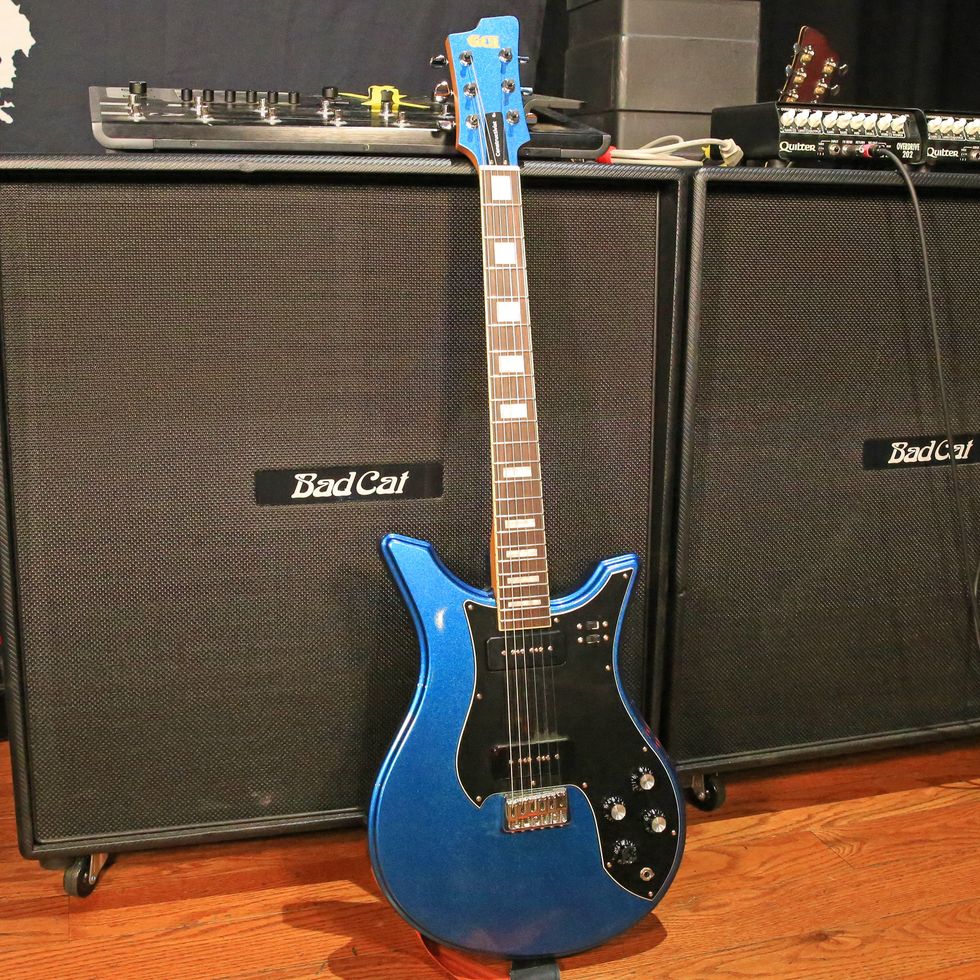
For this headlining Converge run, Kurt took to the road with a pair of his own God City Instruments shred sticks. This one is the Constructivist model that has a body shape Kurt has been employing for over a decade. This current iteration has an ash body, roasted maple neck (with bolt-on assembly and C profile), ebony fretboard with cream binding, a Graph Tech nut, and comes loaded with a set of GCI’s Soap Jammers that are stacked alnico 5 humbuckers (10k bridge output/7k neck output). Ballou describes the Soap Jammers as “being high-output humbuckers that have the midrange push of a P-90 that still chugga chuggas like a humbucker.” He’s been using D’Addario strings for over 20 years and has been loyal to the NYXLs since they came out. He currently prefers the Medium Top/Extra Heavy Bottom set (.011–.056) and bludgeons them with D’Addario Duragrip Yellow (light/medium) picks.
Rock 'n' Roll Machine
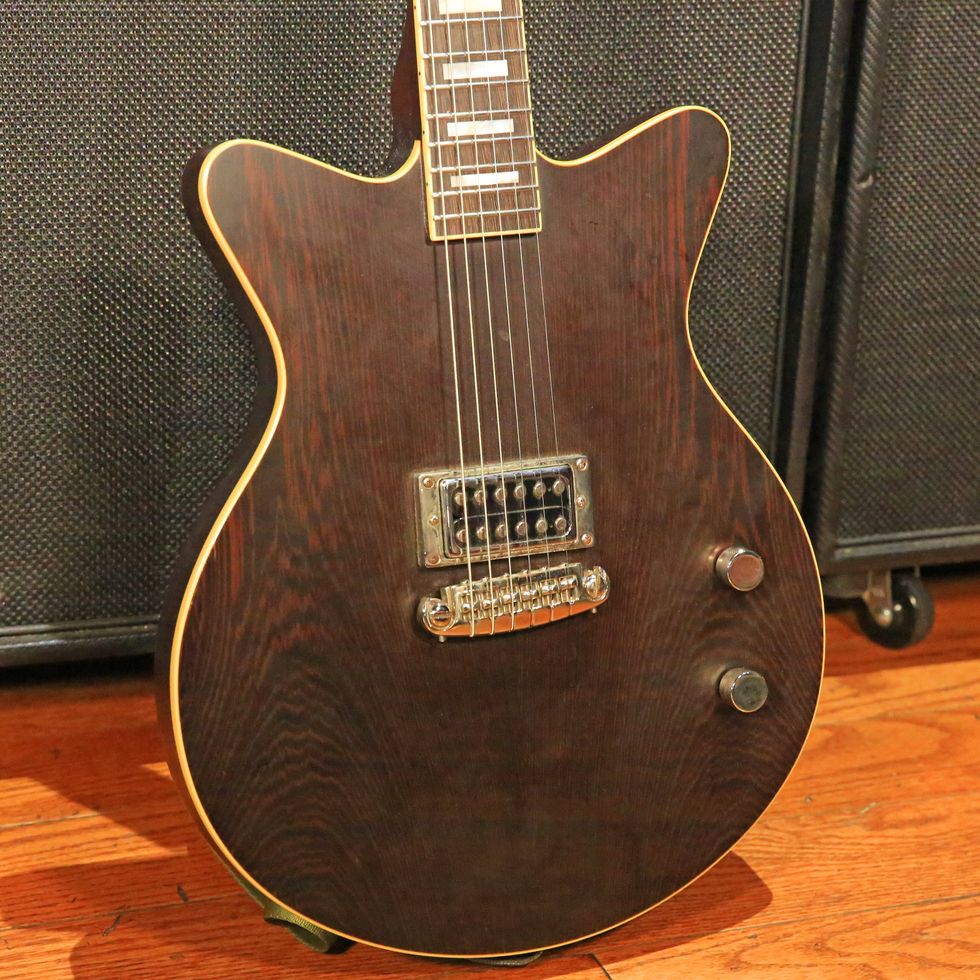
Here is Kurt’s single-pickup GCI Craftsman that has a chambered mahogany body paired with a wenge top, a maple neck with set-neck construction, wenge fretboard with cream binding, Graph Tech nut and PM-8593 bridge, and it screams—thanks to the high-output GCI Slug Jammer humbucker that has a ceramic magnet and 13k resistance.
Ballou adds that “It’s a beautiful guitar that I just love to play. This is my favorite—just a basic rock ’n’ roll machine, and I use it the most for writing and recording Converge stuff.”
A Floor Smorgasbord
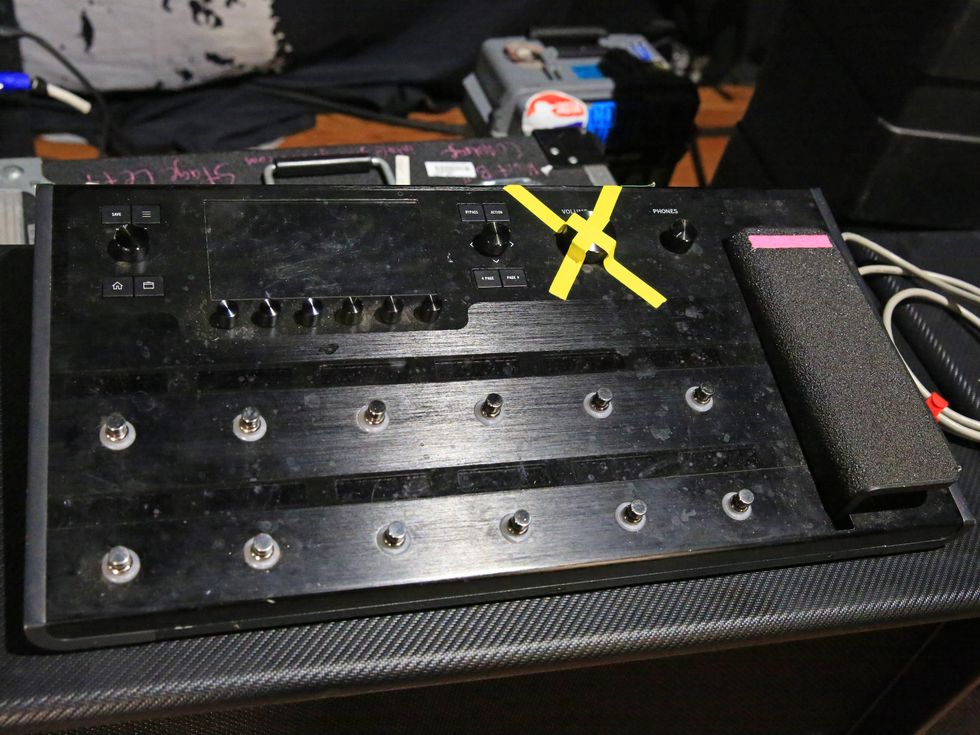
Converge would love to tour with stacks of gear, but they also live in the real world. They understand the compromise a modern hardcore band must make to pull off shows to their high standard, while also staying in the black, so for a few years Kurt has turned to the Line 6 Helix. He says it gives him a consistent, reliable sound each night that can be stored as a carry-on. Another perk is that his setup is in a stereo configuration, and the Helix’s direct-out function allows him to run front-of-house a stereo signal without having to worry about miking cabs (and possible phasing issues) that inevitably happen when mics and cabs get bumped and moved during Converge’s chaotic performances.
For these “Converge Classic”** headlining shows, Ballou operates the Helix in stompbox mode with a “Kvrt Preset V6.” Some of the pieces of the puzzle include a Centaur-style distortion, two separate noise gates, a Tycoctavia Fuzz, a Dual Pitch setting, Ping Pong (turning on stereo delay and reverb at the same time), and a Searchlights reverb patch. All of these are engaged and omitted by Ballou as if they were pedals on a standard board. He does use a phase looper for the song “Eye of the Quarrel” that allows him to play both guitar parts featured on it. His amps are based on modelings chasing a Diezel (Das Benzin Mega) and PRS Archon.
Worth noting that Ballou's grievances on the Helix were addressed by Ben Adrian of Line 6. Here's what he had to say: The gripes Kurt had with the unit can be resolved by issuing an update a while back, the tuner got a "Trails on/off" control, which allows delay, reverb, and looper audio to pass when the tuner is engaged. Also, with an update, "Command Center" was implemented a while back.This allows almost any function to be assigned to any switch in stomp mode. This includes all the controls for the looper.
(**Converge did an album with Chelsea Wolfe in 2021 called Bloodmoon: I. That included the standard four-piece Converge lineup but then added Wolfe, Stephen Brodsky, and Ben Chisholm. They toured as a seven-piece band, then Ballou had his Helix in snapshot mode that had several changes and settings moved automatically by the unit. The band now jokingly refers to their regular quartet as “Converge Classic.”)
Mighty Minis

Rather than employ the Helix’s IR technology, Ballou runs out of the Helix to a pair of Quilter Overdrive 202 heads.
Cat Power
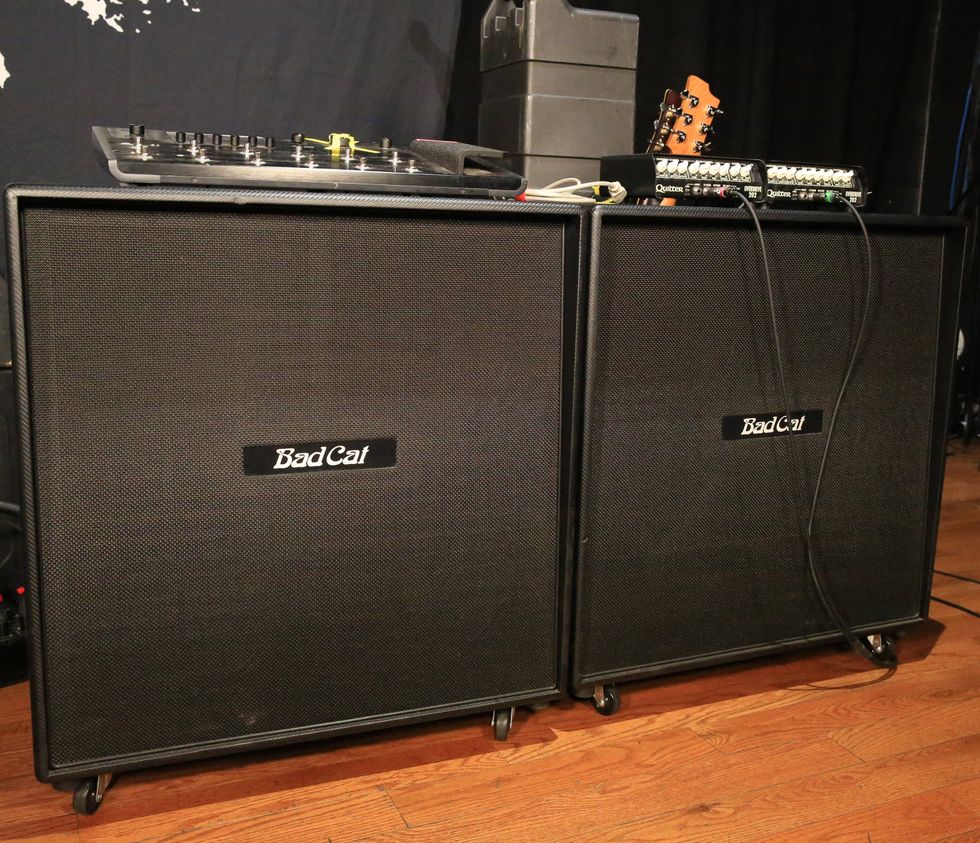
Those Quilters then power a couple of Bad Cat 4x12s filled with Celestion Vintage 30s, giving Kurt all the stage volume he can handle.
Meet Mr. Riffblaster
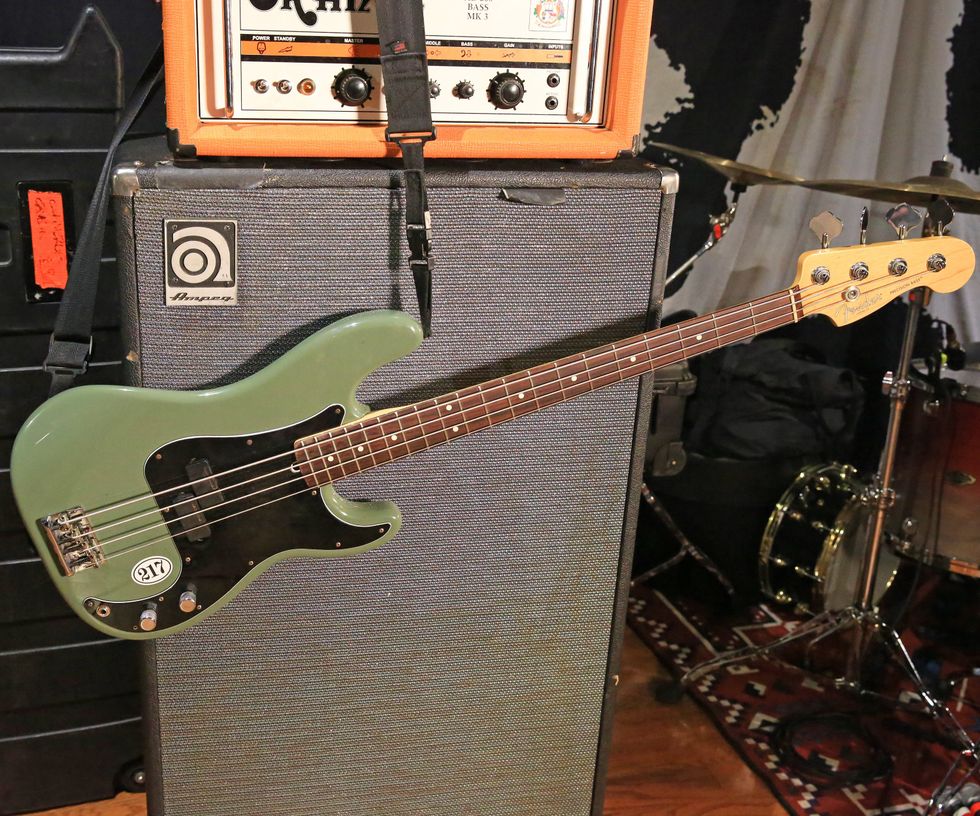
Nate Newton has been the Converge bassist since 1998, and has always stayed true to the Fender Precision bass. He was gifted this green P from Fender, and modded it by adding in his signature Lace Riffblaster that the company says utilizes “the power of ceramic magnets to create the perfect balance of extreme power and articulation.” He uses Ernie Ball Regular Slinky Bass strings and green D’Addario Duralin Precision picks (medium).
In the Stream of Caleb Scofield
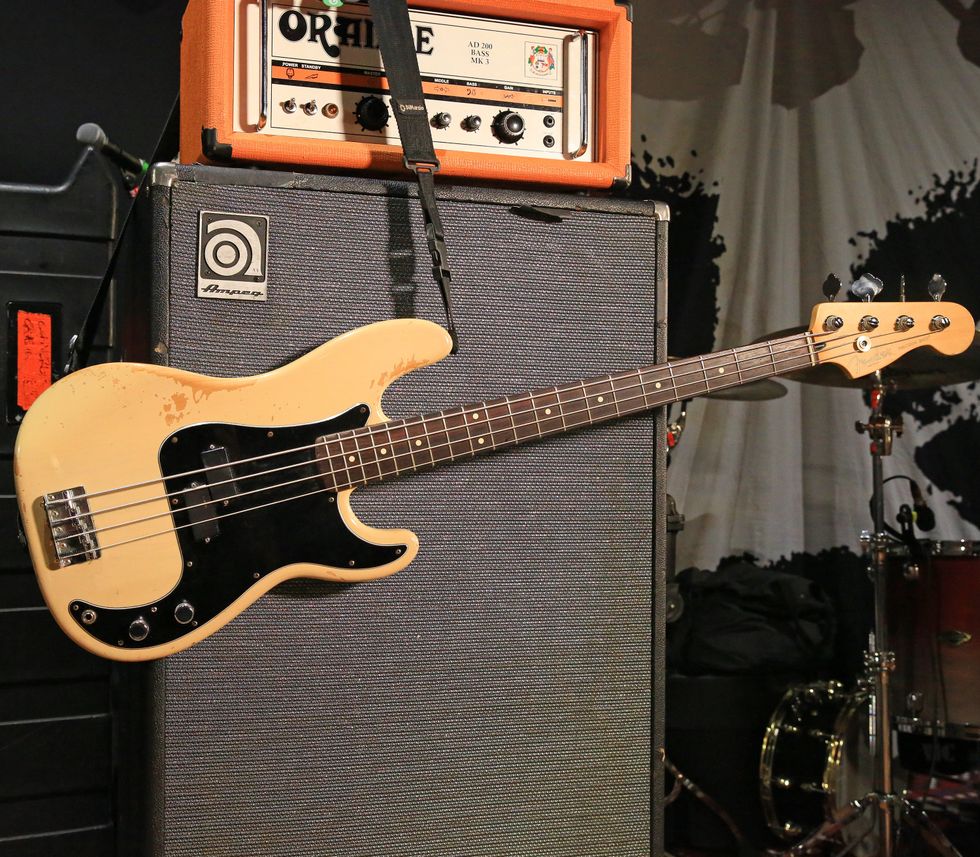
Newton’s other main gig since 2018 has been filling the void of Cave In bassist Caleb Scofield who tragically passed away five years ago. To honor their fallen brother, Cave In has kept Scofield’s P in their gear collection for Newton to use on Cave In recordings and tours. He has it with him on the Converge tour because once their run ended, he met the Cave In crew out in Colorado for their tour behind 2022’s Heavy Pendulum. Newton put in a set of his Lace Riffblaster pickups and noted during the Rundown that “it’s the best-sounding P-Bass” he’s ever played, and, for what it means to play this bass in Scofield’s spot: “It’s a weird thing, especially playing the older songs and using this bass. In a twisted way, it kind of feels like hanging out with Caleb. It feels like he’s there with us, and it’s an honor to play this bass in that band. I cherish it.”
Slim and Husky
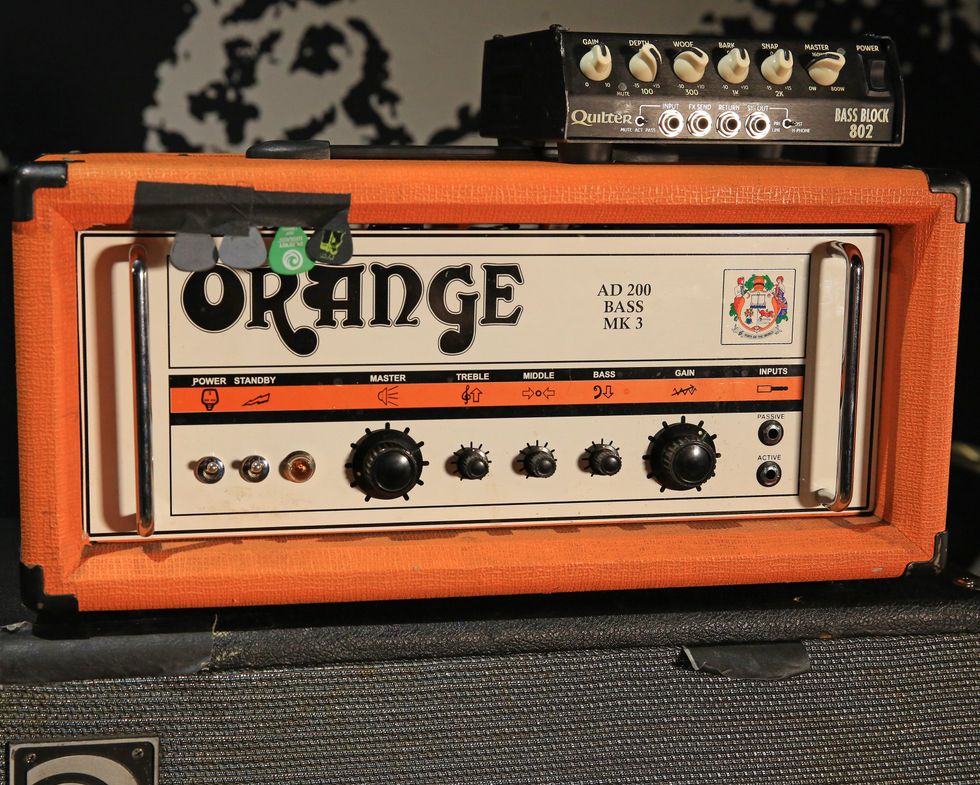
For years Newton has plugged into this Orange AD200B Mk3 that pumps out 200 watts, thanks to four KT88 power tubes. It runs into an old Ampeg 8x10 cabinet. A Quilter Bass Block 802 rides as a backup for Converge, but takes the spotlight when he plays with Cave In.
Nate Newton's Pedalboard
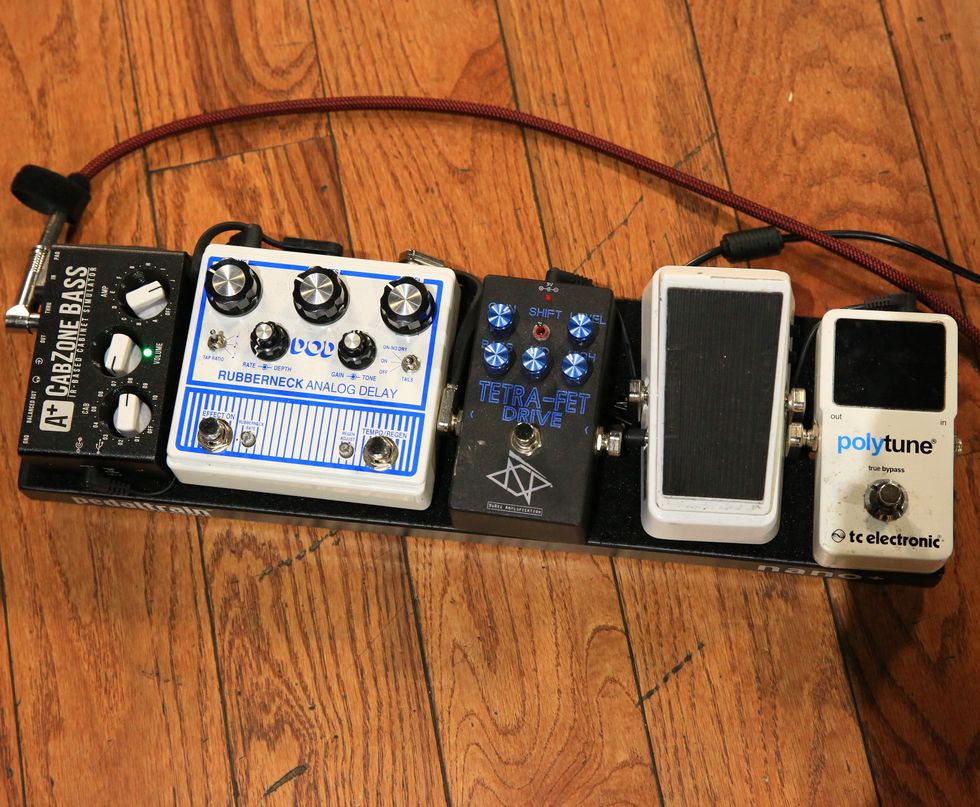
The condensed stompbox station still shifts tectonic plates, in large part because of the Nunez Tetra-Fet Drive always being on with Converge. It takes the AD200 from a rumbler to molten-lava erupter. Both the Dunlop CBM105Q Cry Baby Bass Mini Wah and DOD Rubberneck Analog Delay are rarely used with Converge, but both get plenty of usage for Cave In sets. The Shift-Line A+ CabZone Bass sends the signal to front-of-house and offers 10 power amp emulations for additional shaping. The TC Electronic PolyTune keeps his Ps in check, and everything rides tight and tidy on a Pedaltrain Nano+ platform.
Shop Converge's Rig

- Quilter Labs Overdrive 202 200-watt Head
- Line 6 Helix Guitar Multi-effects Floor Processor
- Fender American Professional II Precision Bass V
- Orange AD200B MK 3 200-watt Bass Head
- DOD Rubberneck Analog Delay Pedal with Tap Tempo
- Dunlop CBM105Q Cry Baby Mini Bass Wah Pedal
- TC Electronic PolyTune 3 Polyphonic LED Guitar Tuner Pedal with Buffer





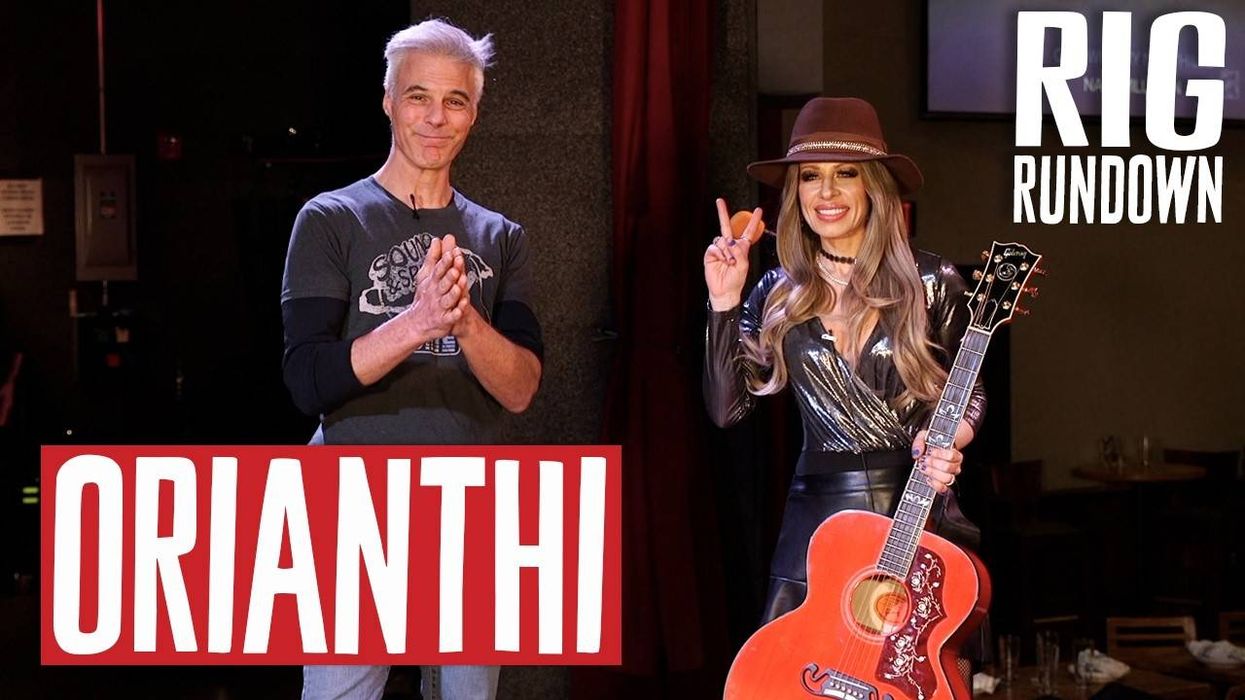
![Rig Rundown: AFI [2025]](https://www.premierguitar.com/media-library/youtube.jpg?id=62064741&width=1245&height=700&quality=70&coordinates=0%2C0%2C0%2C0)












 Shop Scott's Rig
Shop Scott's Rig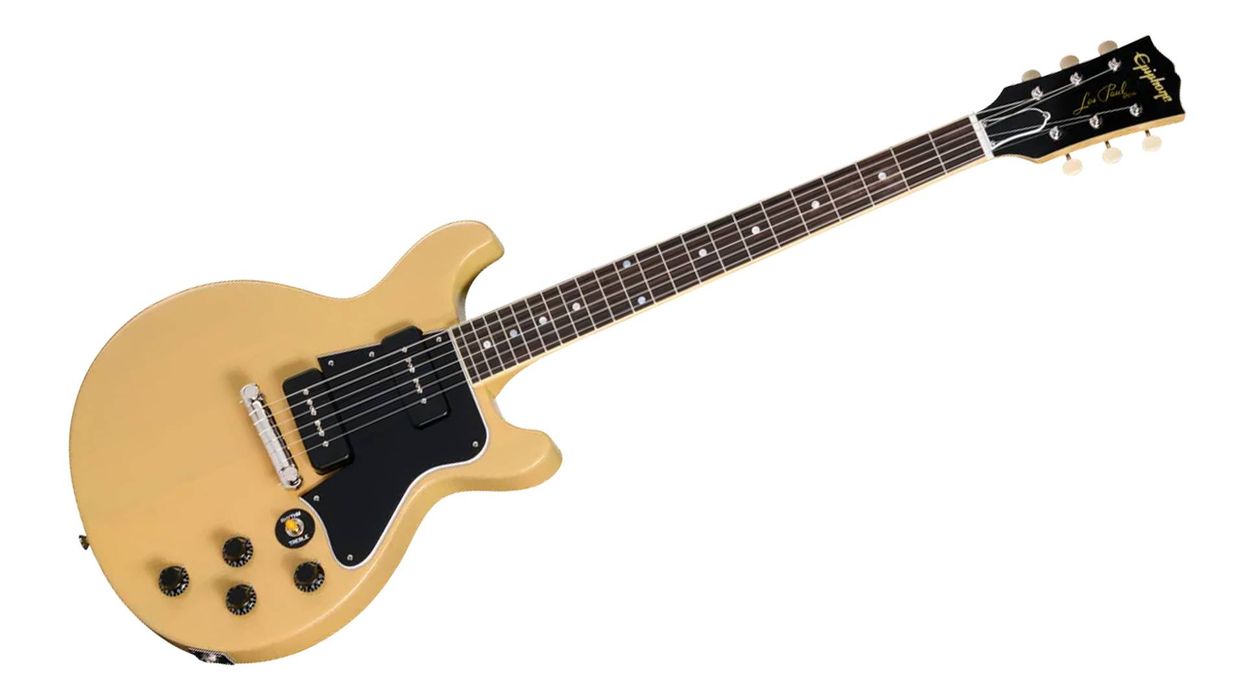













 Zach loves his Sovtek Mig 60 head, which he plays through a cab he built himself at a pipe-organ shop in Denver. Every glue joint is lined with thin leather for maximum air tightness, and it’s stocked with Celestion G12M Greenback speakers.
Zach loves his Sovtek Mig 60 head, which he plays through a cab he built himself at a pipe-organ shop in Denver. Every glue joint is lined with thin leather for maximum air tightness, and it’s stocked with Celestion G12M Greenback speakers.







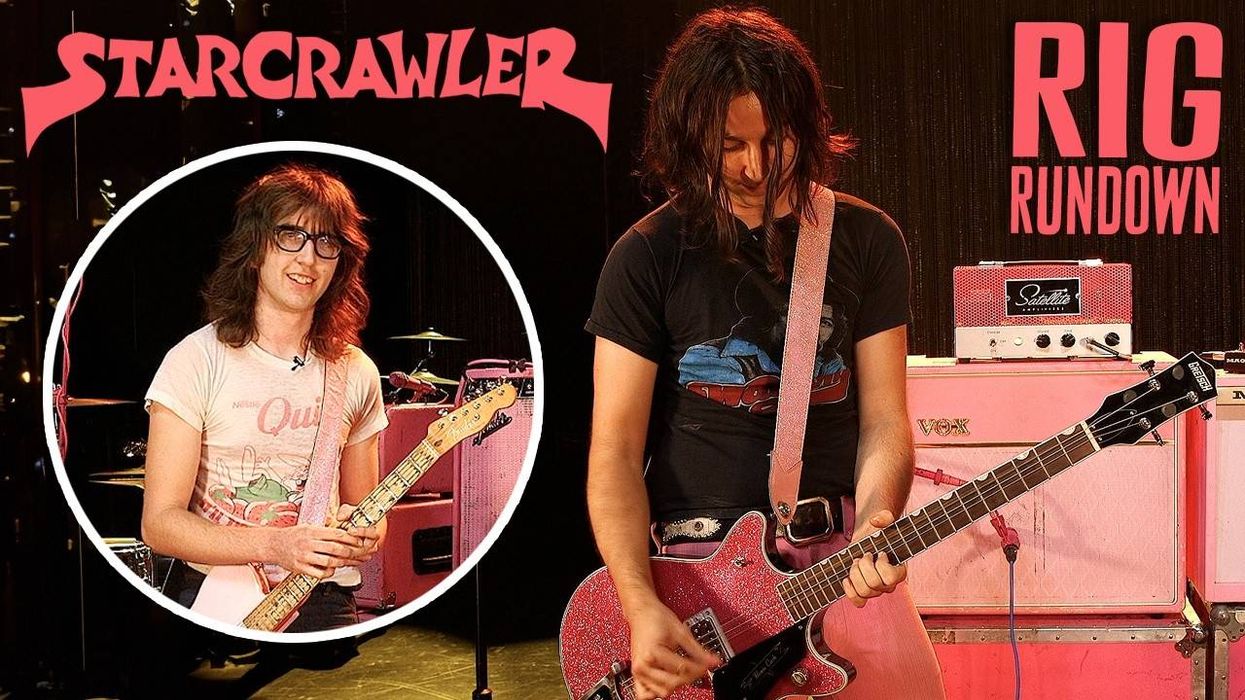
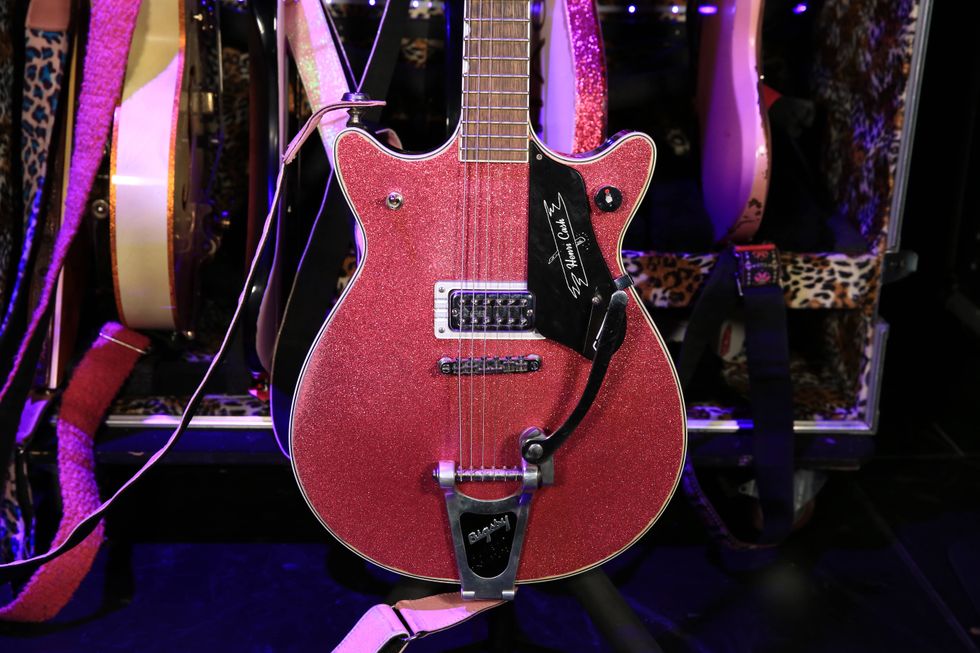
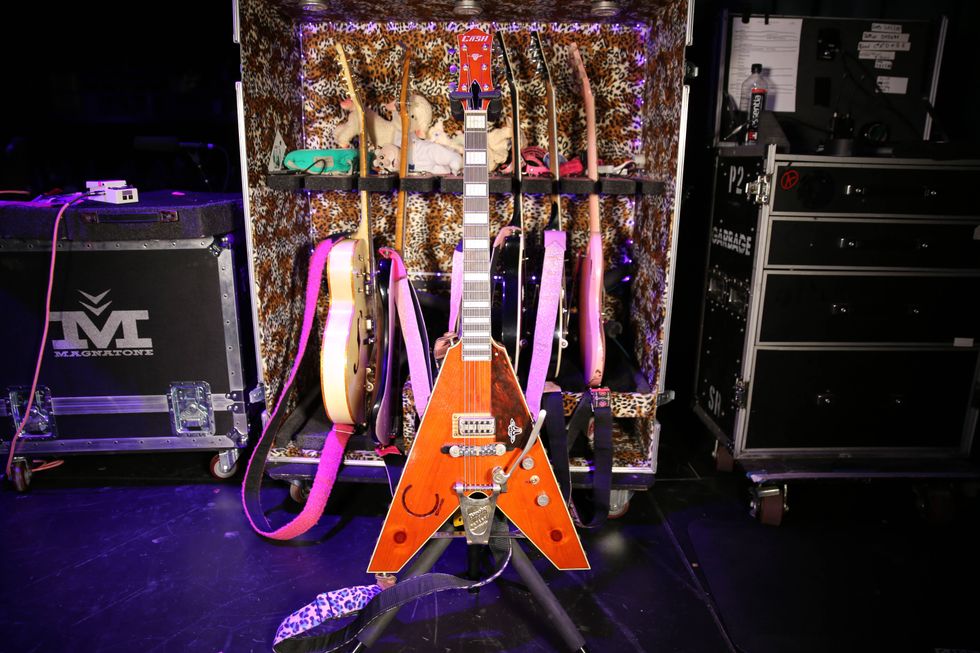
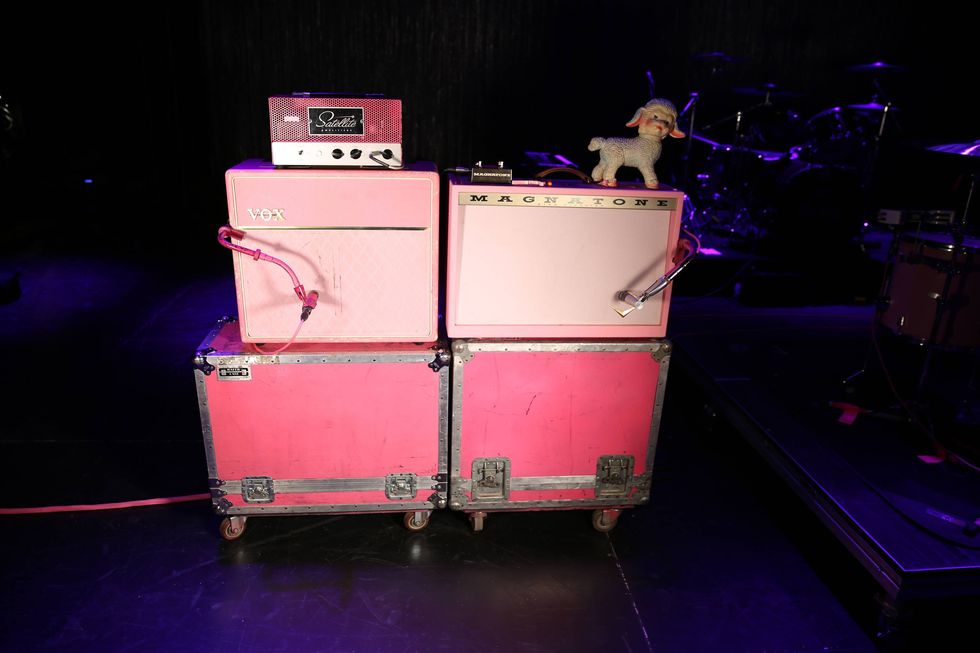
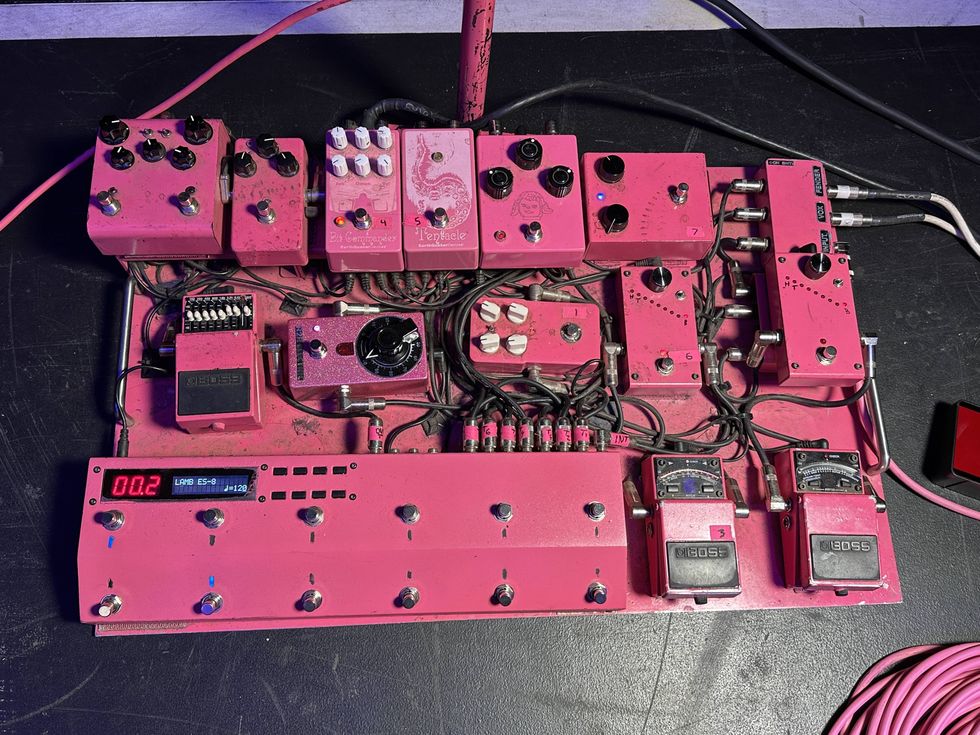
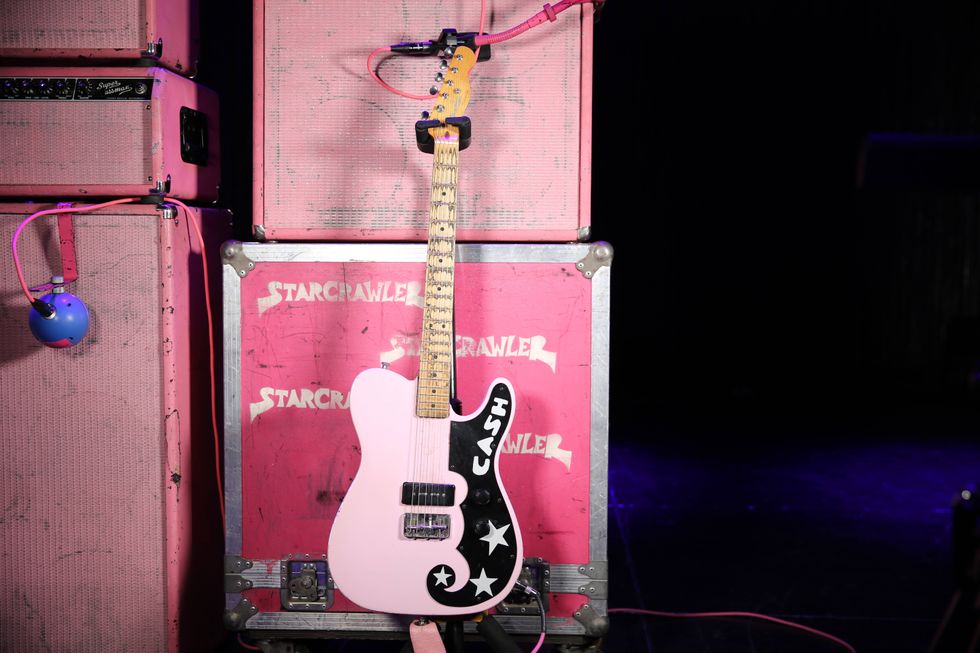
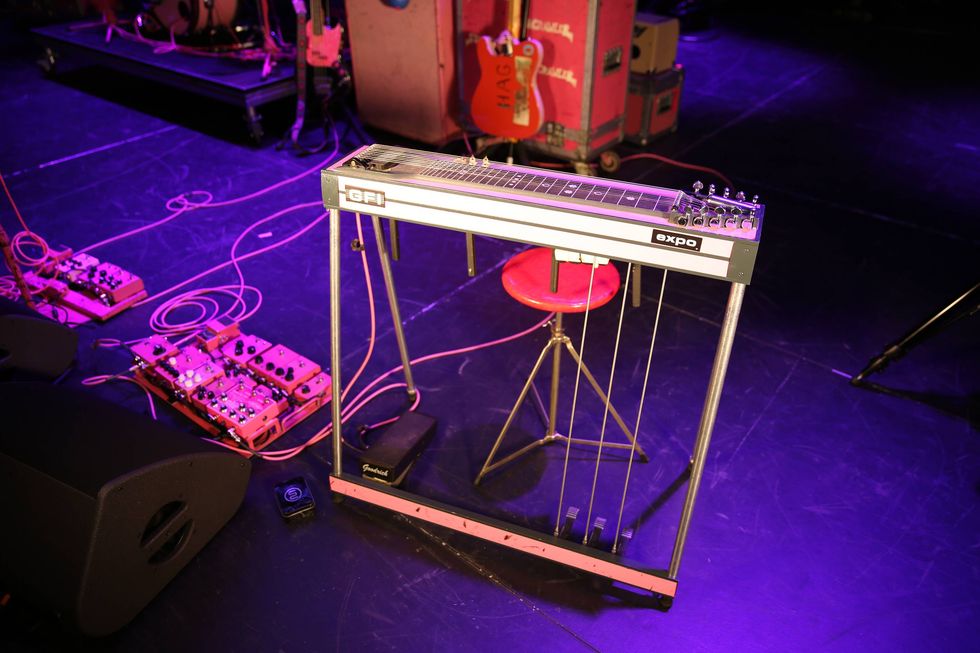
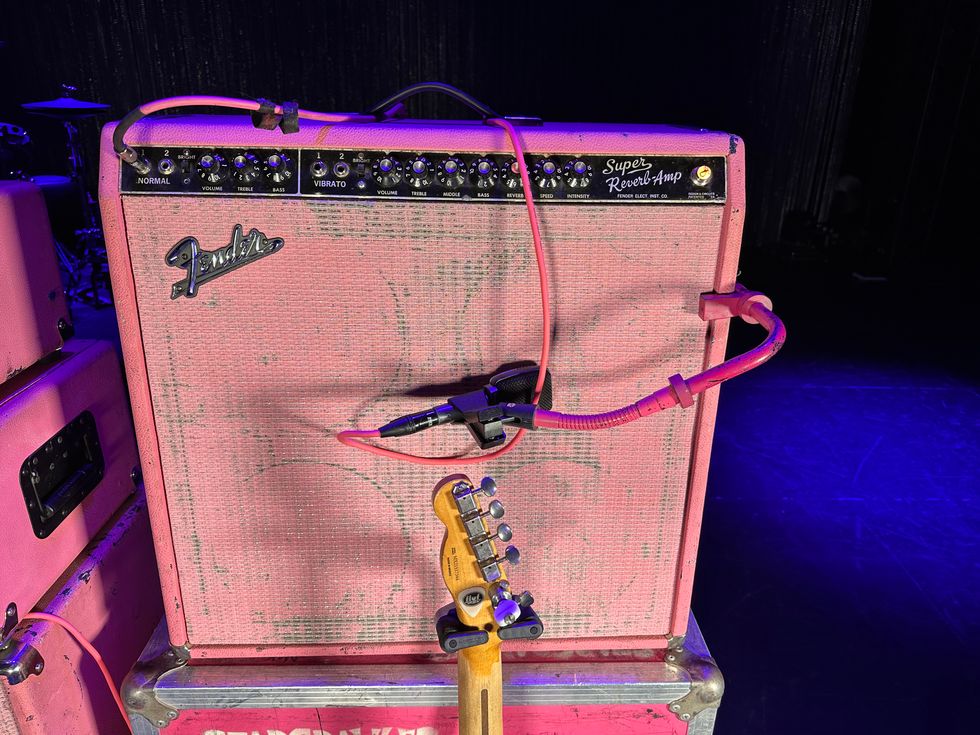
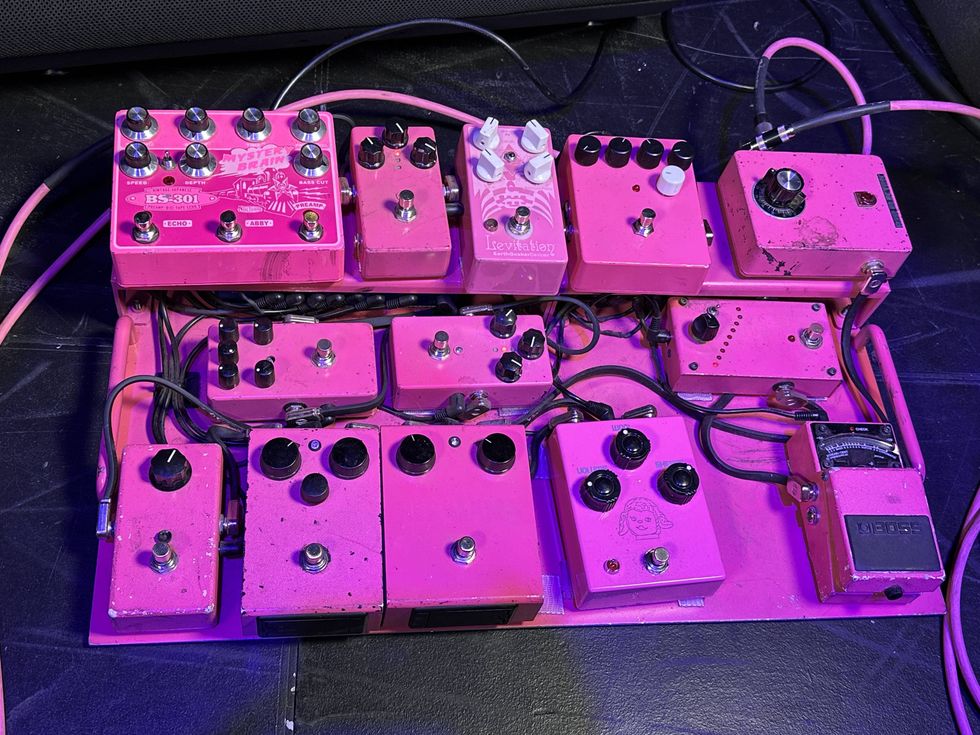

![Devon Eisenbarger [Katy Perry] Rig Rundown](https://www.premierguitar.com/media-library/youtube.jpg?id=61774583&width=1245&height=700&quality=70&coordinates=0%2C0%2C0%2C0)






